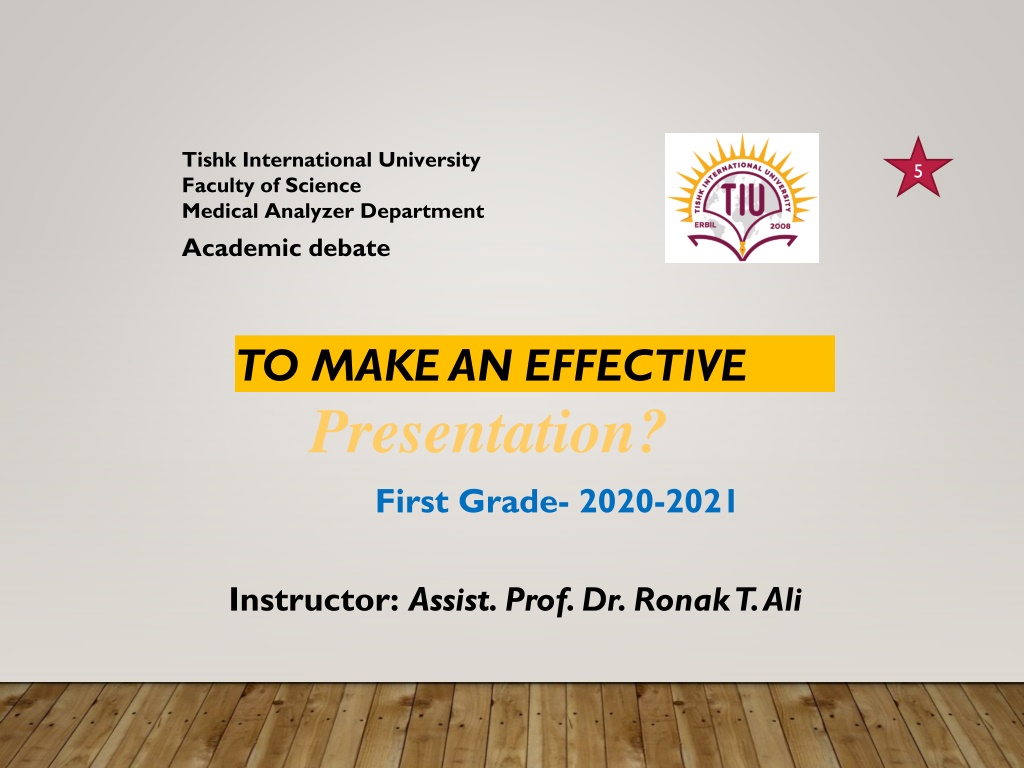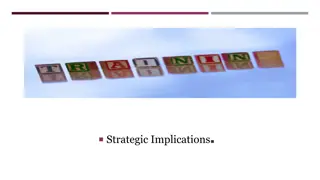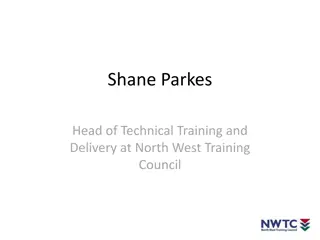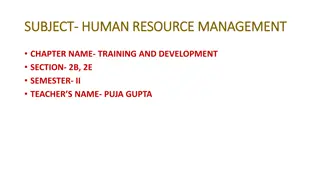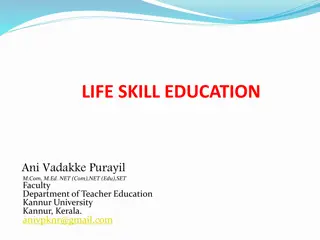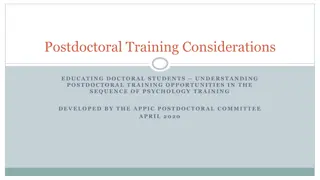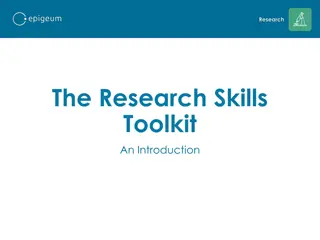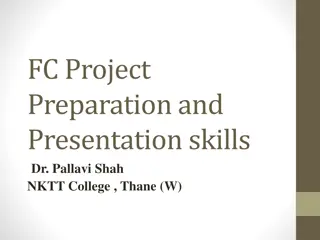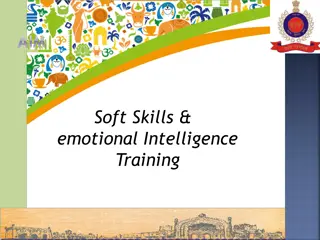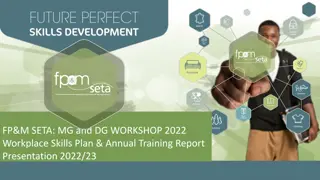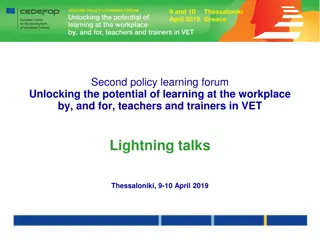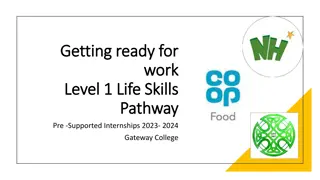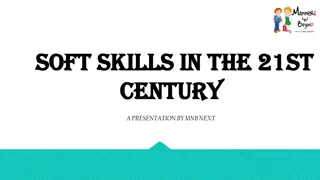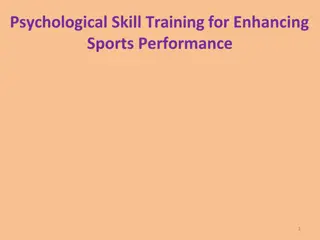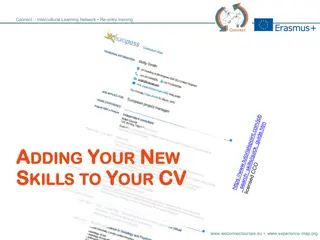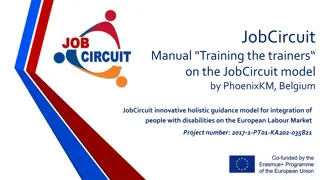Effective Presentation Skills Training
A presentation is a structured means of communicating information or ideas to inform or persuade a group. To be effective, one needs proper planning, preparation, delivery, and audience focus. This includes structuring the presentation, overcoming nervousness, using visual aids effectively, and avoiding common pitfalls like excessive details or poorly designed slides. Key steps involve planning the purpose, audience, objectives, and message design. By focusing on the audience's needs and interests, one can deliver a powerful and engaging presentation effectively.
Download Presentation

Please find below an Image/Link to download the presentation.
The content on the website is provided AS IS for your information and personal use only. It may not be sold, licensed, or shared on other websites without obtaining consent from the author.If you encounter any issues during the download, it is possible that the publisher has removed the file from their server.
You are allowed to download the files provided on this website for personal or commercial use, subject to the condition that they are used lawfully. All files are the property of their respective owners.
The content on the website is provided AS IS for your information and personal use only. It may not be sold, licensed, or shared on other websites without obtaining consent from the author.
E N D
Presentation Transcript
Tishk International University Faculty of Science Medical Analyzer Department Academic debate 5 TO MAKE AN EFFECTIVE Presentation? First Grade- 2020-2021 Instructor: Assist. Prof. Dr. Ronak T. Ali
2 WHAT IS A PRESENTATION? A structured, prepared and speech- based means of communicating information, or ideas to a group of interested people, in order to inform or persuade them.
WHY PRESENTATION SKILLS Training? To properly structure your presentation. To overcome nervousness. To learn what not to do during presentation To design and use visual aids effectively 3 To develop powerful Body Language. To deliver effective presentation.
4 PRESENTATION BORING
COMMON CAUSE OF INEFFECTIVE Presentation 5 Failure to motivate the audience Confusing structure Execessive details Poorly designed slides
STEPS NEEDED TO MAKEAN Effective Presentation For delivering an effective presentation we need to take the following steps: 1. Planning 2. Preparation 3. Delivery 6
8 PLANNING What is the purpose of your presentation? Who will be your audience? What are you trying to achieve through this presentation?
9 (CONT) PLANNING Design your message Organize your material Design the look of your presentation Create the slides.
10 LIST YOUR OBJECTIVES -1: STEP Why are you making this Presentation. What do you expect to accomplish?
THE FOCUS ON audience STEP -2: 11 Who are they? Focus on what your audience needs to know, NOT- what you know. Consider audience s level & interest Decide what you want the audience to do, as a result of your presentation
DETERMINETHE STEP -3: 12 message Tailor the points to the audience s technical level: information needs and interest. Modify the presentation for each new audience
13 PREPARATION Fundamental rules for presentation are: 1. Subject of presentation: a) Decide your message in advance b) Have a strong conviction on what you want to talk.
14 PREPARATION 2. Organize your points logically: a) What to say at the begining? b) What you deal in the middle? c) How to close? ( May be by summarizing entire presentation.)
15 PREPARATION 3. Rehearse in private: You need to practice delivery of presentation. Because, Practice makes a person perfect .
16 PREPARATION 4. Keep notes to a minimum: --If necessary, use Index Cards. -- Jot down the main points
17 CONQUER NERVOUSNESS
18 9 PS OF HOW TO OVERCOME FEAR OF Public Speaking Prior & Proper Preparation Poor Performance of the Person Putting on the Presentation Prevents
BEAFRAID DON T Sometimes an audience may seem intimidating But always remember they are also people like you. * Imagine that you are addressing your friends 19
20 PREPARATION Try to conquer nervousness: * Try to minimize your stage- fear. Take deep breath and try to relax. If required, drink little water.
21 PREPARATION Concentrate on topic & not the audience. Remember- Winners continue, losers stop.
ORGANIZING YOUR DELIVERY- General Tips Announce your topic clearly 22 Give an outline of your presentation in your introduction State your objective upfront
23 THE DELIVERY The Eyes The Voice Expression The Body
YOUR DELIVERY- ORGANIZING The Opener Tell them what you are going to tell them - Set the tone - Capture your audience s attention - Build rapport -Tailor your opener to your audience 24
25 THE OPENER 1. Introduction: a) Start with a bang to get attention. Start with an ice-breaker such as a story, joke or a quotation.
26 THE OPENER Be warm and friendly Provide facts & figures Throw out a question
ORGANIZING THE DELIVERY (Middle) Say it 27 - Organize the presentation around main aspects of the subject.
28 BODY OF PRESENTATION 1. Cover the subject in logical order 2. Repeat important points 3. Use visuals wherever possible 4. The voice should not be too fast, too high or too slow.
BODY LANGUAGE DURING presentation 29 * SMILE Make Eye-Contact Do not lock your arms Knees unlocked, head up, Move Connect with the audience Breathe & Relax
30 ORGANIZING-THE CLOSE Tell them what you have told them - Reiterate the theme - Summarize message - Repeat key points - Ask for action - End on a positive note
TIME YOURSELF FOR Maximum Impact 31 Oops! I don t have much time left!
THE THREE PRESENTATION Essentials 1.Use Visual Aids, wherever you can 2. Rehearse, Rehearse, & Rehearse If you fail to prepare, you are prepared to fail Rehearse against clock 3. Memorize your script 32
DESIGNING EFFECTIVE POWER Point Presentation 33 Progressive Big Simple Consistent Clear Summary
DESIGN THE LOOK OF YOUR Presentation * Follow the KISS rule Keep it Short and Simple Use short words and short phrases The 6 x 7 rules: - Not more than 7 words per line - no more than 6 lines per slide 34
35 WHYVISUALS? Visuals are powerful tools because they: - increase understanding - Save time - Enhance attention - Help control nervousness
36 MAKE IT CLEAR Size implies importance
37 MAKE IT BIG (HOW TO ESTIMATE) Look at it from 2 meters away 2 m
38 TIPS & TECHNIQUES FOR Effective Presentation Maintain good eye contact Vary your speaking volume Use pauses Do not read your presentation Don t stand between the audience and the slides Use stories, questions, clips, examples etc
39 TIPS & TECHNIQUES FOR delivery Do not put both hands in your pockets for long time Speak to the audience. Not to the visuals Speak clearly and loudly enough Circulate around the room as you speak Discuss your objectives at the begining of the presentation
40 VISUALAIDS TIPS ON Are the Visual Aids easy to read and easy to understand? Can they be easily seen from all areas of the room?
41 SOME FINALWORDS Communication is the key Text to support the communication Pictures to simplify complex concepts Visuals to support, not to distract
SIGNS TO DETECT THAT AUDIENCE IS not Listening 42 Start to look down Touch or rub the face, hand or hair Yawn Fidget Sigh heavily Whiisper Tap their feet
43 Make sure you have finished speaking before your audience has finished listening. -Dorothy Sarnoff
44 Thank You
